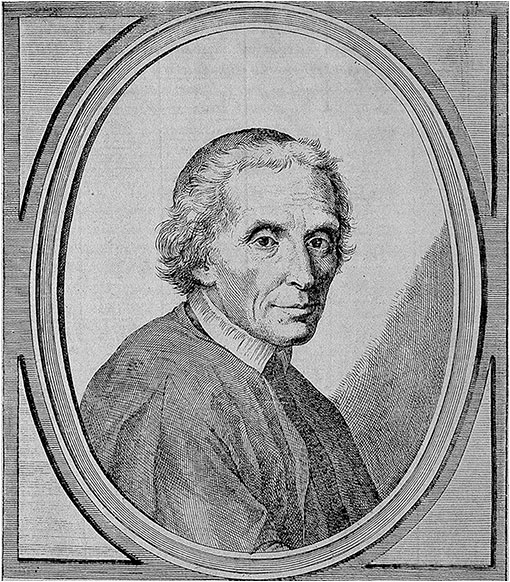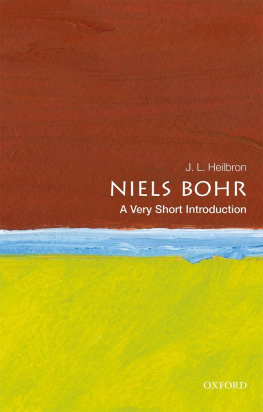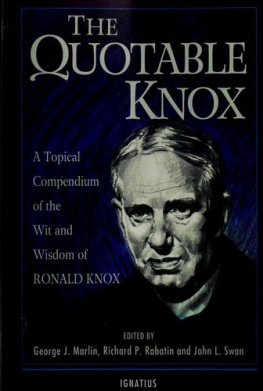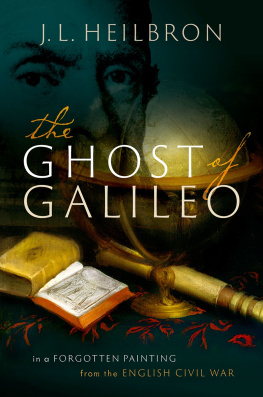J. L. Heilbron - The Incomparable Monsignor
Here you can read online J. L. Heilbron - The Incomparable Monsignor full text of the book (entire story) in english for free. Download pdf and epub, get meaning, cover and reviews about this ebook. year: 2022, publisher: OxfordUP, genre: Detective and thriller. Description of the work, (preface) as well as reviews are available. Best literature library LitArk.com created for fans of good reading and offers a wide selection of genres:
Romance novel
Science fiction
Adventure
Detective
Science
History
Home and family
Prose
Art
Politics
Computer
Non-fiction
Religion
Business
Children
Humor
Choose a favorite category and find really read worthwhile books. Enjoy immersion in the world of imagination, feel the emotions of the characters or learn something new for yourself, make an fascinating discovery.
- Book:The Incomparable Monsignor
- Author:
- Publisher:OxfordUP
- Genre:
- Year:2022
- Rating:4 / 5
- Favourites:Add to favourites
- Your mark:
- 80
- 1
- 2
- 3
- 4
- 5
The Incomparable Monsignor: summary, description and annotation
We offer to read an annotation, description, summary or preface (depends on what the author of the book "The Incomparable Monsignor" wrote himself). If you haven't found the necessary information about the book — write in the comments, we will try to find it.
The Incomparable Monsignor — read online for free the complete book (whole text) full work
Below is the text of the book, divided by pages. System saving the place of the last page read, allows you to conveniently read the book "The Incomparable Monsignor" online for free, without having to search again every time where you left off. Put a bookmark, and you can go to the page where you finished reading at any time.
Font size:
Interval:
Bookmark:



Great Clarendon Street, Oxford, OX2 6DP,
United Kingdom
Oxford University Press is a department of the University of Oxford. It furthers the Universitys objective of excellence in research, scholarship, and education by publishing worldwide. Oxford is a registered trade mark of Oxford University Press in the UK and in certain other countries
J.L Heilbron 2022
The moral rights of the author have been asserted
Impression: 1
All rights reserved. No part of this publication may be reproduced, stored in a retrieval system, or transmitted, in any form or by any means, without the prior permission in writing of Oxford University Press, or as expressly permitted by law, by licence or under terms agreed with the appropriate reprographics rights organization. Enquiries concerning reproduction outside the scope of the above should be sent to the Rights Department, Oxford University Press, at the address above
You must not circulate this work in any other form
and you must impose this same condition on any acquirer
Published in the United States of America by Oxford University Press
198 Madison Avenue, New York, NY 10016, United States of America
British Library Cataloguing in Publication Data
Data available
Library of Congress Control Number: 2021952588
ISBN 9780192856654
DOI: 10.1093/oso/9780192856654.001.0001
Printed and bound by
CPI Group (UK) Ltd, Croydon, CRO 4YY
Cover image: Wellcome Collection; Internet Archive; Marzolino/Shutterstock.com.
Links to third party websites are provided by Oxford in good faith and for information only. Oxford disclaims any responsibility for the materials contained in any third party website referenced in this work.
O wing to restrictions of movement and access caused by the pandemic, I have had to approach colleagues I did not know for copies of their work that, in the normal course, I would have consulted in a library. My requests were met with a spirit of generosity in accordance with the ideals of the old Republic of Letters championed by my protagonist Francesco Bianchini. I am particularly indebted to Riccardo Balestrieri, Joseph Connors, Edward Corp, Moti Feingold, Richard Maher, Brigitte Slch, and Luis Tirapicos. At the outset of my studies of Bianchini I had the invaluable help of Ivano Dal Prete, like Bianchini a gentleman from Verona, and work of the contributors to international meetings about Bianchini in Verona and Augsburg. Like all scholars, I am indebted to the staffs, present and past, of research libraries. The institutions on whose resources I have relied and whose staffs I thank include the Biblioteca Civica and the Biblioteca Capitolare in Verona, the Bodleian (Oxford), the British Library (London), the Huntington (San Marino), and the Vallicelliana (Rome).
I must also thank many friends and colleagues for their patience in listening to my stories about The Incomparable Monsignor, among them Dan Kevles, Kanwal Misri, and Eileen Reeves. Alison Browning has heard them all, often, and has helped me refine them. I am indebted to Jeff Hodges for his inspired proofreading and owe special thanks to Stefano Gattei, who procured odd bits for me from Italian archives and helped in other ways to bring this work to press.
Knowledgeable editors are important members of the Republic of Letters. I am lucky to have one in Latha Menon at OUP. I thank her and her assistant, Jenny Nugee; Amanda Brown, who secured reproducible versions of the images needed; Hilary Walford for correct and charitable copyediting; and Roopa Vineetha Nelson for managing the production.

O n Sunday, 30 April 1719, at 8:00 in the morning, a broken-down vehicle drawn by two exhausted carthorses left the Holy Roman Empire and entered the border town of Peri in the Republic of Venice. It carried a small bright teenage girl and a weary pregnant woman, who had the company, on foot, of a disheveled cavalier and a servant. Although they had been travelling nonstop for over forty-eight hours, the pious teenager insisted on going to church. The party then slept for a few hours in a cheap inn before again taking to the road. On the morning of 2 May they reached Bologna. The first business of the cavalier, one Charles Wogan, was to see to the recovery of his charges; the second, to visit the archbishops palace. He was admitted to the presence immediately. The archbishop: You are back even earlier than I expected. I knew the mission was hopeless. The cavalier: You are mistaken, Your Eminence. The princess is here. I beg you to find suitable accommodation for her in the city.
After a few days in Bologna the company set off for Rome. They arrived on 15 May, slowed by the press of people welcoming the princess along the way. Among the first to bring her the popes greetings after her arrival at the convent in which she would spend the next few months was the protagonist of our history, the incomparable Monsignor Francesco Bianchini. Why he? The answer fills most of this book. And who were Wogan and his princess and why were they in such a hurry? That too will be revealed.
Let us begin with the never sufficiently to be praised Monsignor, held by many of his contemporaries to have been the greatest Italian of his time, and by spokespersons from the generations that followed as the greatest man that Italy produced in the [eighteenth] century, or, if judged by his depth and breadth of mind, the greatest Italian ever. Among his accomplishments was writing a universal history from the creation to the fall of Assyria; recovering ancient calendars; discovering, excavating, and interpreting ancient buildings; designing a papal collection of antiquities later partially realized in the Vatican museums; undertaking a geodetic mapping of the papal states; confirming and publicizing Newtons theories of light and color; discovering several comets and a few variable stars; building the most beautiful astronomical instrument, and the most exact solar observatory in the world, in the basilica of Santa Maria degli Angeli in Rome; detecting the slow decline in the obliquity of the ecliptic and almost discovering the aberration of starlight (two key astronomical findings of the eighteenth century); and creating a map of nonexistent features on the invisible surface of Venus. His international reputation earned him election as a foreign associate (one of only eight) of the Acadmie royale des sciences of Paris and as a fellow (chosen on Newtons nomination) of the Royal Society of London.
All that was by no means all. As a trusted servant of Pope Clement XI, who reigned from 1700 to 1721, Bianchini helped execute the delicate balancing the papacy practiced during the War of the Spanish Succession, which pitted Britain, the Dutch Republic, and the Habsburg Empire against France and Spain. One of his assignments resulted in attachment to the cause and person of the Old Pretender, James III, the Stuart claimant to the thrones of England, Scotland, and Ireland. Bianchini embedded memorials of his involvement in events of European significance in the pavement of Santa Maria degli Angeli at locations corresponding to the suns position on the dates on which they happened. This hard-copy history was a unique and, for those who can read it, extraordinary invention. Bianchini was subtle as well as clever. Although he accepted the Newtonian universe and the humanity of heretics, he managed to avoid the snares of conservative prelates and oppressive censors. He did not push against closed doors. No Galileo, he served his church and preserved himself, a little saint and every inch a courtier.
Font size:
Interval:
Bookmark:
Similar books «The Incomparable Monsignor»
Look at similar books to The Incomparable Monsignor. We have selected literature similar in name and meaning in the hope of providing readers with more options to find new, interesting, not yet read works.
Discussion, reviews of the book The Incomparable Monsignor and just readers' own opinions. Leave your comments, write what you think about the work, its meaning or the main characters. Specify what exactly you liked and what you didn't like, and why you think so.







